Industries
Construction
Simulating the Future of Transportation and Mobility
Exponentially innovate to deliver the transportation and mobility experiences of the future with the next generation of simulation and engineering tools.
Cut costs & innovate
quickly with simulation
The construction industry is integral to shaping infrastructure and the built environment, covering the design, development, and maintenance of buildings and other structures. Ansys offers a comprehensive suite of simulation solutions to optimize construction processes. Tools like Ansys Mechanical for structural and thermal analysis, Ansys Fluent for fluid dynamics, Ansys LS-DYNA for impact and seismic analysis, Ansys Maxwell for electromagnetic simulations, Ansys Twin Builder for digital twins, and Ansys Discovery for rapid prototyping enable engineers to design, analyze, and optimize construction projects for enhanced safety, efficiency, and sustainability.
- Electric Vehicles
- Vehicle Engineering
- Simulation Solutions
- Simulation Solutions
- ADAS & Autonomous Vehicles
Structural Building Design
ANSYS Structural Building Design is a powerful simulation tool used for analyzing and designing structural components of buildings. It helps engineers ensure safety, stability, and compliance with building codes through advanced finite element analysis.
Perform structural analysis to ensure the durability and safety of buildings under various load conditions.
Conduct load analysis considering diverse environmental and operational scenarios.
Optimize material usage for cost-effectiveness, sustainability, and structural performance.
Simulate building performance under extreme conditions like earthquakes and strong winds.
Component-Level Capabilities
ANSYS Structural Building Design offers component-level capabilities for detailed analysis of individual structural elements like beams, columns, and slabs. It enables precise modeling, load assessment, and code-compliant design of each component within a building system.

Foundations
- Simulate load distribution to ensure stable, durable foundation designs.
- Analyze soil and structure interaction to optimize foundation strength and stability.

Beams and Columns
- Test buckling tendency under heavy load conditions to prevent failure.
- Assess stresses and deflections of beams under operational loads.
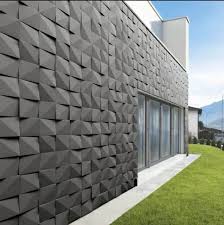
Walls and Cladding
- Simulate acoustic properties to ensure occupant comfort.
- Analyze thermal expansion and contraction effects to ensure durability under varying environmental conditions.
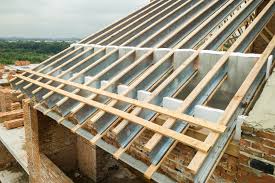
Roof Structures
- Test load-bearing capacity to ensure roof safety under heavy snow, wind, and other weather extremes.
- Analyze thermal management for improved energy efficiency.
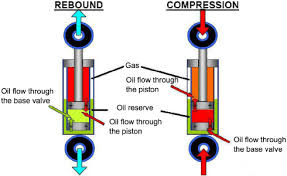
Dampers and Shock Absorbers
- Simulate performance under seismic conditions to optimize damping systems.
- Assess fatigue characteristics for repeated use in seismic shock mitigation.
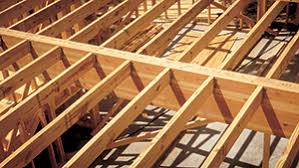
Floor Systems
- Simulate structural performance under various loading conditions, including static and dynamic forces.
- Select appropriate materials for durability and cost-effectiveness.
Relevant Ansys Software
ANSYS Structural Design integrates with building-relevant ANSYS software such as ANSYS Mechanical, ANSYS CivilFEM, and ANSYS Workbench. These tools support comprehensive structural analysis, simulation, and optimization for safe and efficient building design.
CFD software for flow, heat, and reactions.
Ventilation and Comfort Modelling
ANSYS Ventilation and Comfort Modeling simulates airflow, temperature, and pollutant distribution to optimize indoor environmental quality. It helps ensure occupant comfort and compliance with HVAC performance standards in building design.
Perform fluid dynamics simulations to optimize airflow and ventilation system design.
Simulate thermal behaviour to maintain energy efficiency and occupant comfort.
Conduct structural analysis for HVAC systems to ensure long-term reliability.
Optimize indoor air quality (IAQ) by analyzing pollutant dispersion and filtration efficiency.
Component-Level Capabilities
ANSYS Ventilation and Comfort Modeling offers component-level capabilities to analyze HVAC elements like ducts, vents, and diffusers. It enables detailed simulation of airflow and thermal behavior to enhance system efficiency and occupant comfort.
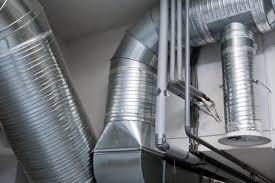
Air Ducts
- Simulate airflow through ducts to ensure efficient ventilation and energy use.
- Evaluate thermal performance to minimize heat loss or gain during air transport.
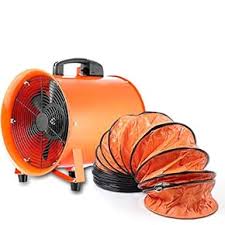
Ventilation Fans
- Test airflow performance to ensure effective ventilation across spaces.
- Analyze vibration and noise levels to enhance occupant comfort.
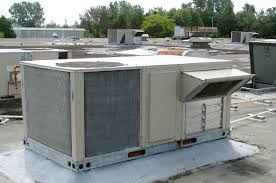
HVAC Units
- Simulate thermal performance to optimize energy use for heating and cooling.
- Perform structural analysis to ensure long-term reliability of HVAC components.
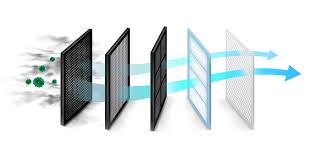
Air Filters
- Test airflow through the various filter layers for efficient performance of air purifiers.
- Simulate pressure drop across filter media to optimize filter design and energy consumption.
Relevant Ansys Software
ANSYS Ventilation and Comfort Modeling utilizes relevant software like ANSYS Fluent and ANSYS CFX for detailed CFD analysis. These tools support accurate simulation of airflow, temperature, and contaminant control in building environments.
Wind Engineering
ANSYS Wind Engineering enables simulation of wind effects on buildings and structures to ensure safety, stability, and performance. It supports aerodynamic analysis, pressure load prediction, and code-compliant design optimization.
Computational fluid dynamics (CFD) analysis to simulate wind load distribution on buildings and other structures, ensuring structural safety and stability.
Vibration analysis to simulate wind-induced vibrations and resonance effects on tall buildings, facades, and other structures to ensure occupant comfort and structural integrity.
Fatigue analysis to evaluate the effect of wind-induced vibrations and oscillations on the durability of buildings and other structures.
Component-Level Capabilities
ANSYS Wind Engineering offers component-level analysis of structural elements like façades, roofs, and cladding under wind loads. It enables detailed evaluation of pressure distribution, vortex shedding, and structural response for optimized design.

Building Facades
and Roof
- Perform stress analysis to test the effect of wind on glass and facade materials, optimizing strength and minimizing risk of failure.
- Perform aerodynamic analysis to optimize roof shapes for reduced uplift forces and improved wind resistance.

Bridges
- Perform aeroelastic analysis to simulate wind-induced vibrations and effects on bridge structures, ensuring stability and safety.
- Simulate fluid-structure interaction (FSI) analysis on suspension cables and supports to ensure adequate strength and stability, and prevent resonance.

Towers and High-Rise Buildings
- Perform vibration analysis to simulate wind-induced structural oscillations in tall towers, ensuring stability during extreme wind events.
- Conduct fatigue analysis on high-rise structures to prevent failure due to wind-induced vibrations and oscillations.

Wind Turbines
- Perform aerodynamic analysis to simulate forces on turbine blades, optimizing performance under various wind conditions.
- Analyze structural behaviour to assess the stress and durability of the structure in harsh wind environments.
Relevant Ansys Software
ANSYS Wind Engineering leverages software like ANSYS Fluent and ANSYS Mechanical for accurate wind flow simulation and structural response analysis. These tools help model complex wind interactions and ensure compliance with wind loading standards.
Finite element analysis for structural performance.
Ansys Composite PrepPost
Models composite materials used in lightweight wind-resistant components, such as cladding and facade systems.
HVAC Equipment Design
ANSYS HVAC Equipment Design enables the simulation and optimization of heating, ventilation, and air conditioning components for performance and efficiency. It supports thermal, fluid, and structural analysis to improve reliability and energy efficiency.
Perform thermal simulations to optimize heating and cooling system efficiency.
Use fluid dynamics to design air and fluid flow systems for HVAC components.
Analyze the structural strength of HVAC components to ensure durability and performance.
Simulate vibration to reduce noise levels and enhance system stability.
Conduct performance testing under diverse operational scenarios for reliability.
Component-Level Capabilities
ANSYS HVAC Equipment Design offers component-level capabilities to simulate and analyze individual HVAC parts like compressors, coils, and fans. It allows detailed evaluation of thermal, fluid flow, and mechanical performance for optimized equipment design.

Heat Exchangers
- Simulate thermal performance to optimize heat transfer efficiency in HVAC systems.
- Analyze the structural behaviour of materials under varying temperature conditions to ensure durability.
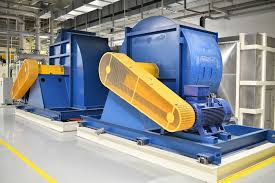
Fans and Blowers
- Test airflow efficiency to ensure optimal ventilation and circulation.
- Analyze vibration and noise levels to improve occupant comfort and reduce operational disturbances.

Compressors
- Simulate fluid dynamics to enhance the efficiency of compression systems.
- Analyze structural strength under operational stresses to improve reliability.
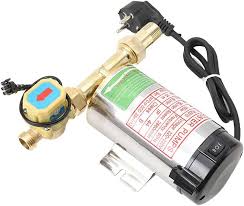
Pumps
- Test fluid flow to ensure reliable operation in various HVAC applications.
- Analyze the structural performance of pump components under operational stresses to ensure durability.
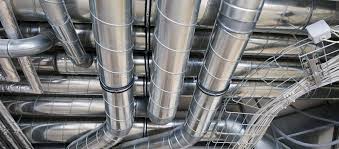
Ductwork
- Simulate airflow dynamics to ensure efficient ventilation and air transport around the system.
- Conduct structural analysis on the components of the duct system to ensure reliability.
Relevant Ansys Software
ANSYS HVAC Equipment Design utilizes software such as ANSYS Fluent, ANSYS Mechanical, and ANSYS Icepak for comprehensive thermal and fluid flow analysis. These tools enable accurate simulation of HVAC systems to optimize performance, efficiency, and reliability.
Fire & Smoke Propagation
ANSYS Fire & Smoke Propagation simulates the spread of fire, heat, and smoke within buildings to assess safety and evacuation strategies. It helps engineers design safer structures by predicting fire behavior and smoke movement under various scenarios.
Fluid dynamics to simulate the propagation of smoke inside buildings, ensuring effective evacuation strategies and compliance with safety standards.
Thermal and structural analyses to assess heat transfer and thermal stresses in various building structures and systems.
Combustion reaction simulation to understand its influence on the surrounding structural elements.
Component-Level Capabilities
ANSYS Fire & Smoke Propagation offers component-level capabilities to model fire dynamics around specific elements like doors, vents, and partitions. It enables detailed analysis of heat transfer, smoke flow, and material response during fire events.

Fire Doors and
Barriers
- Perform thermo-structural analysis of fire doors and barriers to ensure they can endure the heat and thermal stresses generated under fire conditions.
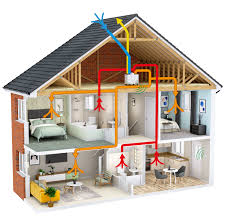
Ventilation Systems
- Simulate airflow using fluid dynamics to evaluate ventilation system performance, ensuring proper smoke extraction during fire events.
- Perform thermo-structural analysis to assess the influence of fire-induced high temperatures on ventilation system components, optimizing system design for operability under fire conditions.
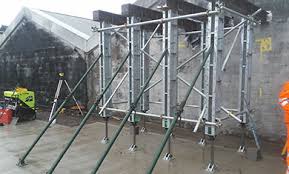
Structural Supports
- Analyze thermal expansion and stresses to simulate the effect of heat on structural components, ensuring the stability of beams, columns, and other supports during a fire.
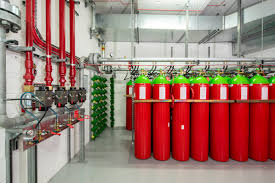
Fire Suppression Systems
- Simulate fluid dynamics to evaluate the flow and distribution of fire suppression agents, optimizing coverage and effectiveness.

Escape Routes and Safety Systems
- Use CFD to simulate smoke propagation through rooms and corridors of buildings to evaluate the effectiveness of emergency evacuation routes.
- Perform electromagnetic simulation and signal integrity testing of electronic safety systems, such as alarms and emergency lighting to ensure safety.
Relevant Ansys Software
ANSYS Fire & Smoke Propagation leverages software like ANSYS Fluent and ANSYS Discovery for detailed simulation of fire behavior and smoke movement. These tools enable accurate modeling of thermal effects, airflow, and safety assessments in building environments.
Ansys Fluent
Bridge Design and Load Analysis
ANSYS Bridge Design and Load Analysis provides advanced simulation tools to evaluate structural performance under various loads, including traffic, wind, and seismic forces. It helps engineers design safer, more durable bridges by predicting stress, deformation, and failure points..
Conduct structural analysis to ensure load-bearing capacity and durability of bridges.
Perform vibration testing to ensure stability and structural integrity under dynamic loads.
Simulate various load conditions to validate design strength and safety.
Optimize material choices for strength, flexibility, and cost-effectiveness.
Component-Level Capabilities
ANSYS Bridge Design and Load Analysis offers component-level capabilities to simulate critical elements like decks, piers, cables, and bearings. It enables detailed assessment of stresses, fatigue, and load distribution for optimized and resilient bridge designs.
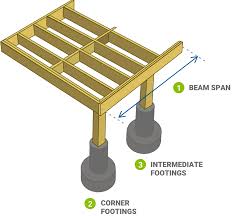
Decks and Beams
- Simulate structural strength to handle expected load conditions for bridges.
- Evaluate the vibrational response of components to ensure durability.

Piers and Abutments
- Test load distribution for the stability of bridge foundations.
- Assess erosion caused due to the flow of river water around the piers.
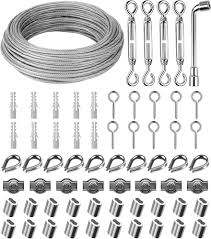
Suspension Cables
- Simulate tension and load capacity to optimize cable performance.
- Analyze thermal expansion and its effect on the load-carrying capacity of the bridge.

Expansion Joints
- Test flexibility for proper expansion and contraction during load changes.
- Select appropriate material that is best suited for the application, to ensure durability under constant stress.
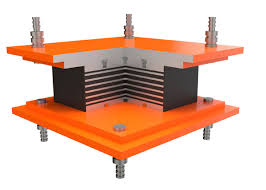
Bridge Bearings
- Simulate load distribution to ensure stability and performance under dynamic conditions.
- Analyze vibration transmission and damping characteristics to reduce significant structural damage.
Relevant Ansys Software
ANSYS Bridge Design and Load Analysis utilizes software like ANSYS Mechanical, ANSYS CivilFEM, and ANSYS LS-DYNA for detailed structural simulation. These tools support accurate modeling of load effects, dynamic behavior, and code-compliant bridge design.
Ansys Composite PrepPost
Models composite materials used in lightweight bridge decks and structural elements, optimizing for strength and durability.
Electrical Systems
ANSYS Electrical Systems provides simulation solutions for the design and analysis of complex electrical networks, ensuring performance, safety, and reliability. It supports system-level modeling of power distribution, electromagnetic compatibility, and thermal effects.
Simulate temperature distribution in electrical components and wiring to prevent overheating.
Analyze electromagnetic fields around electrical components to minimize interference.
Simulate kinematics of circuit breakers to ensure protection systems work properly.
Assess mechanical stresses in switchgear during switching operations.
Component-Level Capabilities
ANSYS Electrical Systems offers component-level capabilities to model and analyze elements like cables, busbars, transformers, and circuit breakers. It enables detailed evaluation of electrical, thermal, and electromagnetic performance for optimized system design.
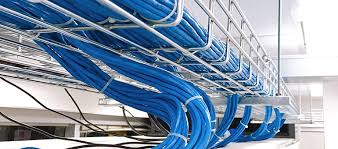
Wiring and Cable
Systems
- Model electrical current flow in cables to ensure load capacity and safety.
- Evaluate cable temperature under load to avoid overheating.

Circuit Protection Components
- Simulate the thermal and electromagnetic performance of fuses and breakers to optimize the design.
- Assess mechanical stresses on circuit breakers during switching operations to ensure structural integrity.
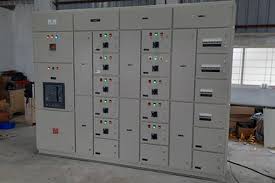
Electrical Panels and Distribution Boards
- Model heat distribution in electrical panels to optimize cooling.
- Evaluate the strength of electrical enclosures under mechanical stress.

Lighting Systems
- Optimize the optical characteristics of lighting systems to achieve the best possible illumination.
- Assess heat generated by lighting systems to ensure longevity.
Relevant Ansys Software
ANSYS Electrical Systems leverages software like ANSYS Maxwell, ANSYS Simplorer, and ANSYS Twin Builder for accurate electromagnetic, circuit, and system-level simulations. These tools enable efficient design, validation, and optimization of complex electrical systems.
Ansys Mechanical
interested in our Product or Solution
Still have a Question?
FAQ
How does ANSYS benefit the construction industry?
ANSYS enables simulation of structural loads, material behavior, and environmental conditions to optimize the design, safety, and durability of buildings and infrastructure.
Can ANSYS simulate earthquake and wind loads on buildings?
Yes, ANSYS can accurately model seismic activity, wind forces, and other dynamic loads to ensure structural integrity and compliance with building codes.
Is ANSYS useful for infrastructure projects like bridges and tunnels?
Absolutely. ANSYS helps evaluate stress, vibration, thermal effects, and fatigue in large-scale civil structures, improving safety and extending lifespan.
How does ANSYS support sustainable construction?
ANSYS helps optimize energy efficiency, material usage, and thermal performance in building design—contributing to greener, more sustainable construction.
Can ANSYS integrate with BIM and CAD tools?
Yes, ANSYS integrates seamlessly with popular CAD and BIM platforms, enabling smooth workflows and detailed simulation of real-world construction scenarios.
Transform Ideas into Reality—Explore Our Simulation Solutions Today!
Partner with Us to Revolutionize Engineering Excellence!
Testimonials


